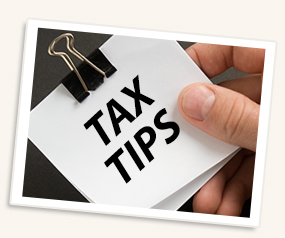
Tax Tips and Tidbits – February 17, 2017
By Steven R. Anderson E.A.
So… you’re having a good day. Things are going right for a change. All is well.
Then you go to the mailbox and there is sits … a letter … from the Internal Revenue Service!
Or worse, a card from the post office telling you that you have certified mail … from the Internal Revenue Service!
Today we are going to cover Taxpayers Who Receive a Letter from the IRS.
Receiving a notice from the Internal Revenue Service is usually no cause for alarm. Every year the IRS sends millions of letters and notices to taxpayers. In the event one shows up in the mailbox, here are ten things you should know.
1) Don’t panic. Many of these letters can be dealt with very simply.
2) Don’t ignore it. Most of these letters have a “reply by” date. Inaction can lead to additional interest and penalties or more aggressive action from the IRS.
3) Call your tax professional. Your tax professional is available to help you, is familiar with your situation, and has experience dealing with the IRS. Utilize his or her expertise. He or she will generally want to see a copy of the letter to determine the next course of action. Some letters can be resolved simply by having you contact the IRS directly. Other, more complicated issues may require you to sign Form 2848, Power of Attorney and Declaration of Representative, to allow your tax professional to deal with the IRS on your behalf.
4) There are a number of reasons the IRS sends notices to taxpayers. The notice may request payment of taxes, notify you of a change to your account, or request additional information. The notice you receive normally covers a very specific issue about your account.
5) Each letter and notice offers specific instructions on what you need to do to satisfy the inquiry.
6) If you receive a notice about a correction to your tax return, you should review the correspondence and compare it with the information on your return.
7) If you agree with the correction to your account, usually no reply is necessary unless a payment is due.
8) If you do not agree with the correction the IRS made, it is important that you respond as requested. Respond to the IRS in writing to explain why you disagree. Be courteous and respectful. Include any documents and information you wish the IRS to consider, along with the bottom tear-off portion of the notice. Mail the information to the IRS address shown in the lower left corner of the notice. Allow at least 30 days for a response from the IRS.
9) Most correspondence can be handled without calling or visiting an IRS office. However, if you have questions, call the telephone number in the upper right corner of the notice. When you call, have a copy of your tax return and the correspondence available. Be patient, you could be on hold for a while.
10) Keep copies of any correspondence with your tax records.
Finally, mail or certified mail is the only way that the IRS will initiate contact with a taxpayer. They do not call or send an email! They will not ask you to pay over the phone. These are scams and should be avoided.
As with any tax issue, contact your tax professional to help you navigate your own unique situation. Doing your taxes yourself is fine, but like any DYI project, know when to consult a professional.
Steven Anderson is an Enrolled Agent, licensed to practice before the IRS. He is the owner of the Beacon and Pawling franchises of H&R Block where he holds a Master Tax Advisor certification and has 27+ years of experience. Steve is also a graduate of the National Tax Practice Institute and a member of the American Society of Tax Problem Solvers, with specialization in collection cases.
